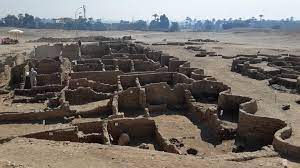The Lost Golden City
- Khanak Ashveena Mayank
- May 18, 2021
- 2 min read
Around the time when the Indus Valley civilisation was flourishing in and around India, a society was bustling in Egypt too. A 3,400 year old city has been unearthed near Luxor in Egypt, this announcement was made by famed Egyptologist Zahi Hawass on 8th April 2021. This city is said to be the ruling site of one of the most prosperous(Amenhotep III), famous (Tutankhamun), and controversial(Akhenaten Amenhotep IV) pharaohs alike.

What is this city and why is it so significant?
This city is being described as the 2nd most important archaeological discovery since the tomb of Tutankhamun. Why? Because we know heaps about the Egyptians’ plethora of customs regarding burial and afterlife, but this discovery can give us a rare peek at the living conditions and routine during the empire’s most booming periods.
Luxor served as the capital of the Egyptian Empire for more than 150 years when it was inherited by Amenhotep III. After his death, his son Amenhotep IV came into power who introduced sweeping changes. The major change was to relocate to Amarna and desert the original capital. But after his death, most traces of him were obliterated. Starting with his son, Tutankhamun, Amenhotep IV’s capital, his religion, and even his name was wiped from history. King Tut returned to the capital, and it was used all the way into the Coptic Byzantine era of the seventh century A.D.
The city’s infrastructure includes living quarters, kitchens, glass and metal production areas, administrative buildings, and even a cemetery, indicating that the pharaoh’s capital city was supported by artistic and industrial production.
How do we know that the city was active during the pharaoh’s reign?
A storage vessel decorated with an inscription states that- “Year 37, dressed meat for the third Heb Sed festival." The year mentioned confirms that the city was active during Amenhotep III's reign. Discoveries include items of jewellery, coloured pottery vessels, scarab beetle amulets and seals of Amenhotep III and one of the funnier items found is a “a large fish covered in gold.”
Because the city was initially discovered just in September of 2020, archaeologists have only scratched the surface of the sprawling site and future excavations at the site may help to answer even more questions about the period.




Comments